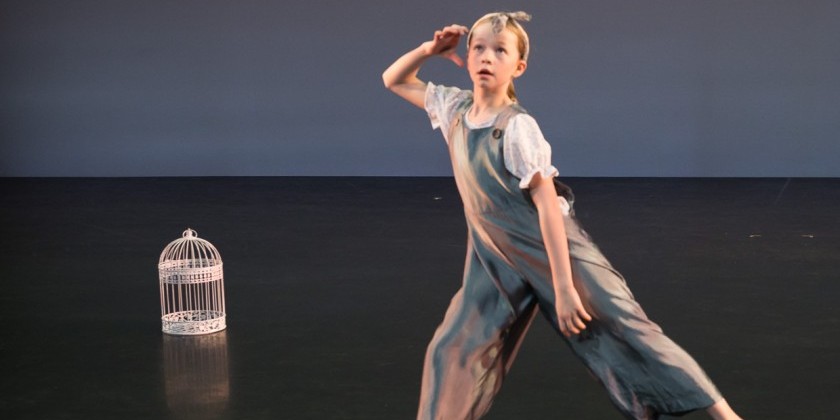IMPRESSIONS: Ismaël Mouaraki's "Le sacre de Lila" at New York Live Arts

As Part of the Crossing the Line Festival
Production: Destins Croisés
Choreographer: Ismaël Mouaraki
Rehearsal Directors and Artistic Advisors: Annie Gagnon, Geneviève Boulet Performers: Rodrigo Alvarenga-Bonilla, Léo Coupal-Lafleur, Gabriel Jobin, Etienne Léonard Benoit, Daniel Stefek, Alexandre Wilhelm
Additional Performers during creation process: Ayoub Hattab, Faissal El Assia, Soufiane Faouzi Mrani, Yassine Khyar
Music: Antoine Berthiaume. Featuring participation from the Association Salamate Gnawa Montréal and Okto Echo.
Lighting and Technical Direction: Rodolphe St-Arneault Costumes and Scenography: Marilène Bastien
Co-production: Agora de la danse
Dates: November 8 - 9, 2024
Venue: New York Live Arts
Celebration, spirit and voyage unite in Ismaël Mouaraki's Le sacre de Lila (2022). The work, embodied by the six virtuosic male dancers of his Montreal-based company Destins Croisés, honors his French-Moroccan-Canadian roots through explosive yet vulnerable energies.
The dancers explore trance by drawing inspiration from the Lila (“night” in Arabic) ceremonies of North Africa traditionally practiced among Maghreb communities. These nocturnal rituals blend song, dance, and music to achieve transcendental spiritual healing. Mouaraki expresses this through his unique marriage of street and contemporary dance styles to craft a fused language capable of conveying richly dynamic humanistic connections.

In a program note, Mouaraki attests to the personal nature of this work and how it “reveals his deep connection to Morocco and the Arab world that is intertwined with evocations of France where he was born and Quebec where he grew up – three territories, rooted and embedded in his body.” To begin the creation process for Destins Croisés, he sought a group of six male dancers who expressed openness and availability to his vision. He brought his cast to Morocco to experience the sacred rituals of his homeland, which included partaking in a Lila ceremony.
In a conversation with Bill T. Jones, Mouaraki explains that “the starting point [for me] is dance, simply dance, not institutional dance. I was born into a culture where dance is spiritual. And from there, I grew up in a spontaneous and mystical instinctive dance [which has] been with me all the way through my career…”
On a dimly lit stage, the dance begins softly with five dancers sitting silently atop woven bags in a wide circle. They observe the sixth, who wields a staff, as he approaches the center of their circle. As he arrives, he taps the midpoint with his staff’s edge and begins meditatively drawing a spiral in chalk. The spiral consumes the interior of the circle, reaching the perimeter where the five continue to watch.

A dancer rises. He slowly tips blue-tinged rice grains from his bag onto the chalk spiral. The others follow suit, spilling the contents of their bags in an act of brotherhood and solidarity. At the last grain’s fall, they stand on the circle’s edge and gaze at the glowing blue spiral they’ve created together.
The six dive into the center, morphing the spiral’s design. As they slide in and out, the spokes left behind create the image of a blue sun: a smaller circle in the middle with six rays beaming outward. To enhance this radiating image, the dancers roll, invert, and suspend in the blue, as if pulled inwardly from its – and one another’s – energy.
Passing through spiritual universes, the dancers exhale, “Allah,” in an expression of dhikr worship, a Muslim practice of remembering divine unity through the repetition of Allah’s name. They raise their hands skywards, rocking side to side. We feel a palpable connection surge through the group, even as they achieve individual spiritual states.

Antoine Berthiaume’s ethereal soundscape shifts from sounds of blowing wind to recorded Gnawa music (Moroccan religious songs and rhythms) which drive the dancers’ impulses. “Gnawa is specifically like a dance ritual,” Mouaraki explains in his interview. “It’s a ceremony that takes place at night, [because that is when spirits are awakened]… the music accompanies us so that as we surpass ourselves, it is like a form of therapy through the dance. And we enter new levels of transcendence.”
As the dancers alternate thrusting themselves individually through the space and meeting in vigorous unison, they toss the blue rice grains to the heavens. Like water from a fountain, the image created by their movements bursts with bliss. As the hour-long performance progresses, the spiral dissolves into a massive blue globe which fills the stage. Maintaining its circular perimeter, the dancers fill the spiral shape’s negative space with rice grains as they bound and slide on the floor. In quieter moments, they descend to their knees and cup the grains in their palms while drawing smaller circles.

We feel their ecstasy reverberate as they smile, whoop, and exhale. They oscillate between euphoric solo moments and serene group embraces; in moments when they dance alone, the group offers their energy from nearby. A group motif emerges as they huddle around the center, arms wrapped around each other, standing and breathing together.

The space settles as the dancers return to their seated positions around the circle’s perimeter. They gaze at the big, blue world enveloping the space between them. As they breathe together, we breathe along with them to appreciate their spiritual voyage and acknowledge their connectedness. We carry the love, companionship, and spirituality that Destins Croisés generously shared with us.














